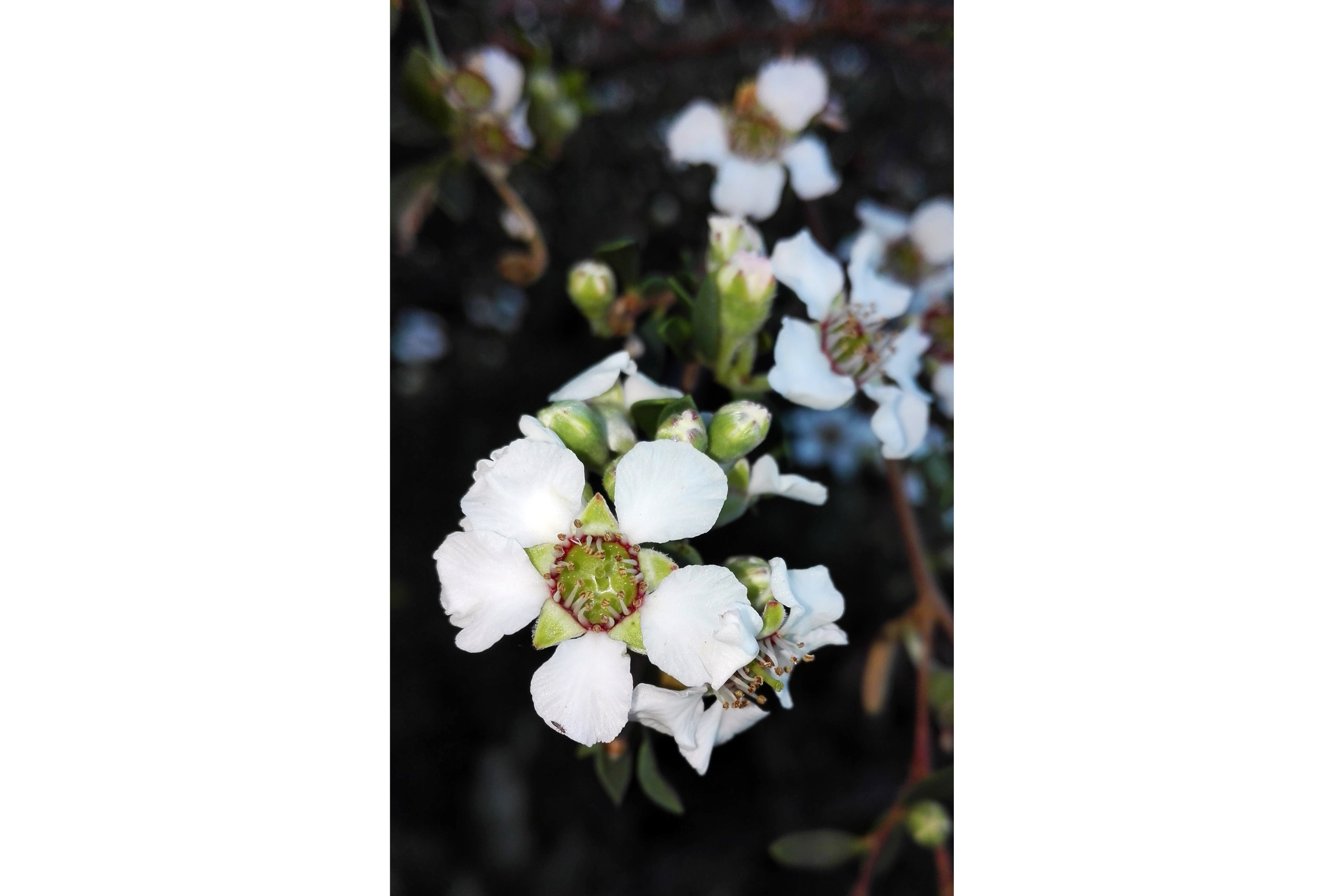Coast tea tree
(Leptospermum laevigatum)

Description
Leptospermum laevigatum, commonly known as the coast tea tree,is a species of shrub or small tree that is endemic to south-eastern Australia, but has been widely introduced in other places where it is often considered to be a weed. It has thin, rough bark on the older stems, narrow egg-shaped leaves, relatively large white flowers and flat topped fruit that is shed shortly after reaching maturity. Leptospermum laevigatum is a bushy shrub or tree that typically grows to a height of 1.5–6 m (4 ft 11 in – 19 ft 8 in) and has thin, rough bark on the older stems. The young stems are covered with silky hairs at first and have a groove near the base of the petiole. The leaves are greyish green, narrow egg-shaped with the narrower end towards the base, 15–30 mm (0.59–1.18 in) long and 5–10 mm (0.20–0.39 in) wide on a short petiole. The flowers are borne on short side shoots, usually in pairs of different ages, and are usually 15–20 mm (0.59–0.79 in) wide. There are many reddish brown bracts around the flower buds but most fall off as the flower opens. The floral cup is mostly glabrous, 3–4 mm (0.12–0.16 in) long with the upper part expanded. The sepals are triangular, about 2 mm (0.079 in) long, the petals white, 5–8 mm (0.20–0.31 in) long and the stamens 1.5–2.5 mm (0.059–0.098 in) long. Flowering mainly occurs from August to October and the fruit is a capsule 7–8 mm (0.28–0.31 in) wide with the remains of the sepals initially attached. The fruit mostly fall from the plant shortly after reaching maturity. This teatree was first formally described in 1788 by Joseph Gaertner who gave it the name Fabricia laevigata and published the description in his book De Fructibus et Seminibus Plantarum. In 1858, Ferdinand von Mueller changed the name to Leptospermum laevigatum. The specific epithet (laevigatum) is from a Latin word meaning "made smooth" or "having a polished surface". This teatree was first formally described in 1788 by Joseph Gaertner who gave it the name Fabricia laevigata and published the description in his book De Fructibus et Seminibus Plantarum. In 1858, Ferdinand von Mueller changed the name to Leptospermum laevigatum.The specific epithet (laevigatum) is from a Latin word meaning "made smooth" or "having a polished surface".
Taxonomic tree:







